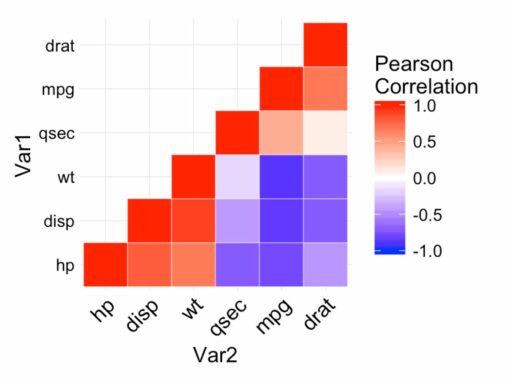Table of Contents
The 2020 Census data provides an invaluable snapshot of the United States’ demographic landscape, offering insights into population dynamics, diversity, socioeconomic patterns, and more. This article delves into the intricate details of the census findings, exploring the implications of these trends for policy, governance, and the future of the nation.
Key Takeaways
- The 2020 Census data indicates significant population shifts, with some states gaining and others losing residents, impacting political representation and resource allocation.
- There is a growing diversity within the nation, as the latest census data reveals changes in racial and ethnic composition, although concerns about undercounting persist.
- Age distribution analysis from the census data suggests evolving demographic structures, which have profound implications for social services and economic planning.
- Economic patterns and mobility, as shown by income, poverty, and migration statistics, reflect the socioeconomic landscape and inform targeted policy interventions.
- The census data is critical for redistricting, advancing equity, and improving emergency management, underscoring the importance of accurate and comprehensive data collection.
Population Dynamics and Shifts

State and County Population Trends
The 2020 Census data reveals significant population dynamics at the state and county levels, reflecting broader national trends. These changes are crucial for understanding regional shifts and planning for future needs.
For instance, the Census Bureau’s 2023 estimates highlight variations in population growth across different states. Here’s a succinct table summarizing the population changes for a selection of states from 2020 to 2023:
| State | 2020 Population | 2023 Population | Change |
|---|---|---|---|
| Utah | 3,205,958 | 3,271,616 | +2.05% |
| Texas | 29,145,505 | 29,527,941 | +1.31% |
| Ohio | 11,689,100 | 11,799,448 | +0.94% |
The shifts in state and county populations are indicative of broader socioeconomic patterns, including migration and economic mobility.
Understanding these trends is essential for various stakeholders, from policymakers to businesses, as they adapt to the evolving demographic landscape. The power of quantitative data in research is evident as it provides a clear picture of where we stand and where we might be heading.
Subcounty Population Variations
Understanding subcounty population variations is crucial for grasping the nuances of demographic shifts. These variations can reveal patterns of growth or decline that are not immediately apparent at higher levels of aggregation. For instance, while a county may show a stable population, subcounty areas could be experiencing significant changes.
The granularity of subcounty data provides insights into local trends that are essential for community planning and development.
To illustrate, here’s a snapshot of the latest population estimates for Utah:
| Year | Total Population | Change |
|---|---|---|
| 2022 | 3,400,493 | – |
| 2023 | 3,456,482 | +55,989 |
This table indicates a notable increase in Utah’s population within a single year, emphasizing the importance of monitoring these fluctuations. Such data is pivotal for sectors like housing, education, and public services, which rely on accurate population counts to allocate resources effectively.
National and Regional Population Estimates
The Census Bureau’s Population and Housing Unit Estimates program is pivotal in providing up-to-date insights into the demographic landscape of the United States. This program generates vital data, including the population counts for states, counties, cities, towns, and even the Commonwealth of Puerto Rico.
In the latest release, the Census Bureau unveiled the 2023 population estimates, offering a fresh perspective on national and state demographics as of July 1, 2023. These figures are essential for understanding population dynamics and serve as a foundation for various planning and policy-making processes.
The Population Estimate Challenge Program has been allocated funds to enhance the accuracy of these annual estimates, which are crucial for communities nationwide.
Below is a snapshot of the total population estimates for select regions:
| Region | Population Estimate |
|---|---|
| Northeast | 55,982,000 |
| Midwest | 68,329,000 |
| South | 125,580,000 |
| West | 78,347,000 |
Diversity and Racial Composition

Race and Ethnicity Estimates
The 2020 Census data reveals a complex tapestry of racial and ethnic identities across the United States. The Census Bureau’s detailed population counts for various race and ethnicity groups reflect the nation’s growing diversity. For instance, individuals now have the option to select more than one race, acknowledging the increasing number of Americans who identify with multiple racial backgrounds.
The racial composition of the U.S. has seen significant changes, particularly among immigrant populations. In 2022, immigrants reported a wide array of racial identities, with the largest groups identifying as single-race Asian (27%) and White (20%). A notable 21% of immigrants reported having two or more races, underscoring the nuanced nature of racial identity in modern America.
The improvements in survey design have led to a more accurate portrait of America’s racial and ethnic makeup, especially for Hispanic and Latino populations.
The following table summarizes the racial makeup of immigrants based on the latest data:
| Race | Percentage |
|---|---|
| Asian | 27% |
| White | 20% |
| Black | 9% |
| American Indian and Alaska Native | 1% |
| Native Hawaiian and Other Pacific Islander | <0.5% |
| Some Other Race | 20% |
| Two or More Races | 21% |
Implications of Racial Demographic Changes
The 2020 Census data has brought to light significant shifts in the racial composition of the United States. The white alone population has decreased to approximately 58 percent, marking a notable decline from the 64 percent recorded in 2010. This change underscores the increasing racial and ethnic diversity across the nation.
Metropolitan areas have been the epicenters of population growth, with minority groups driving this expansion. The implications of these demographic changes are profound, affecting various sectors from education to healthcare, and necessitating a reevaluation of policies and resource allocation.
The revisions to federal forms and the removal of outdated terms reflect a broader societal shift towards recognizing and embracing the nation’s complex racial and ethnic tapestry.
The following table summarizes key racial demographic changes based on the 2020 Census data:
| Racial Group | 2010 Percentage | 2020 Percentage |
|---|---|---|
| White Alone | 64% | 58% |
| Other Groups | 36% | 42% |
These statistics not only highlight the changing face of America but also signal the need for inclusive and equitable policies that address the needs of a more diverse populace.
Concerns Over Potential Undercounting
The 2020 Census faced unprecedented challenges, including the Covid-19 pandemic and political controversies. Concerns have been raised about the potential undercounting of certain populations, which could have significant implications for representation and federal funding distribution.
- The citizenship question controversy may have deterred participation among immigrant communities.
- Over 160 communities officially challenged their census results, indicating widespread worry about coverage errors.
- Rural areas and their residents might be disproportionately affected by undercounting issues.
The accuracy of the census is critical; it shapes our understanding of the nation’s demographic landscape and informs crucial policy decisions.
While the Census Bureau was commended for navigating the difficulties of 2020, it is clear that the next decennial census requires careful planning and adequate funding to avoid repeating these issues. Stakeholders are calling for a comprehensive impact assessment and increased investment to ensure a complete and accurate count in 2030.
Age Distribution and Demographic Projections
Age-Specific Population Analysis
The 2020 Census data reveals significant insights into the age-specific population distribution across the United States. This distribution is critical for understanding the demographic makeup and anticipating the needs of various age groups.
- The youngest age brackets, 0-4 and 5-9 years, have shown a slight decline in population.
- Conversely, there has been a noticeable increase in the population of older age groups, particularly those aged 65 and above.
- The median age of the population has incrementally risen, indicating a gradually aging population.
The shifting age demographics have profound implications for planning and resource allocation in sectors such as healthcare, education, and social services.
The table below summarizes the percentage change in population for selected age groups between the previous and the 2020 Census:
| Age Group | % Change |
|---|---|
| 0-4 | -2.3% |
| 5-9 | -1.8% |
| 65-74 | +3.2% |
| 75+ | +4.1% |
These trends underscore the importance of age-specific analysis in shaping public policy and ensuring that the needs of both the young and the elderly are met.
Long-Term and Short-Term Projections
Understanding the trajectory of population growth and decline is crucial for planning and resource allocation. Long-term projections provide insights into the future composition of society, while short-term projections help address immediate needs and policy adjustments.
- Long-term projections often span several decades, offering a view of potential demographic shifts and challenges.
- Short-term projections, on the other hand, focus on the upcoming few years, crucial for budgeting and program development.
These projections are not just numbers; they represent the future needs and challenges that communities will face. Accurate projections are essential for effective governance and societal planning.
The following table summarizes the projected population changes for the next decade:
| Year | Projected Population Increase | Projected Population Decrease |
|---|---|---|
| 2030 | 5% | 3% |
| 2040 | 7% | 2% |
| 2050 | 10% | 1% |
It is important to note that these projections are subject to change due to unforeseen events and trends. As such, they should be used as a guide rather than an absolute forecast.
Experimental National Projections
The Population Projections Program produces estimates for future dates, factoring in assumptions about births, deaths, and migration patterns. These projections are crucial for understanding potential demographic shifts and preparing for future socioeconomic needs.
The experimental national projections offer a glimpse into the possible futures of the nation’s demographic landscape. They are not definitive forecasts but rather scenarios based on different assumptions:
- Assumption A: High fertility and migration, low mortality
- Assumption B: Moderate fertility, migration, and mortality
- Assumption C: Low fertility and migration, high mortality
These experimental projections are instrumental in policy planning and academic research, providing a sandbox for testing various demographic scenarios.
The Census Bureau’s innovative approach to data, such as the Veteran Employment Outcomes and the Household Pulse Survey, exemplifies the ongoing efforts to refine and expand demographic insights.
Socioeconomic Patterns and Mobility

Income and Poverty Statistics
The analysis of income and poverty statistics is crucial for understanding the socioeconomic health of the nation. Income levels serve as a primary indicator of well-being, while poverty rates highlight areas of economic distress and the need for intervention.
According to recent data, immigrants’ median household income stood at approximately $75,500, which is marginally higher than the median for U.S.-born households at $74,600. However, the incidence of poverty among immigrants was reported at 14 percent, compared to 12 percent for their U.S.-born counterparts.
The disparity in income and poverty levels between different demographic groups underscores the complexity of socioeconomic dynamics in the United States.
The following table summarizes key income and poverty statistics:
| Demographic Group | Median Household Income | Poverty Rate |
|---|---|---|
| Immigrants | $75,500 | 14% |
| U.S.-born | $74,600 | 12% |
These figures are instrumental in shaping policies aimed at reducing economic inequality and improving the overall quality of life for all citizens.
Migration and Geographic Mobility
The 2020 Census data reveals significant patterns in migration and geographic mobility, reflecting how people are moving between states and regions. This movement has profound implications for urban development, housing markets, and economic growth.
- Northeastern states have seen a decline in population, with individuals moving towards the South and West.
- The Midwest remains relatively stable, with slight internal shifts rather than outward migration.
- Sun Belt states continue to attract a diverse range of migrants, bolstered by job opportunities and warmer climates.
The interplay between migration trends and economic factors is a critical aspect of demographic analysis, shaping the future of communities and policy decisions.
The table below summarizes the net migration for select regions:
| Region | Net Migration |
|---|---|
| Northeast | -60,000 |
| Midwest | +5,000 |
| South | +104,000 |
| West | +51,000 |
Housing and Living Arrangements
The 2020 Census data provides a detailed picture of the evolving nature of American households. The composition and characteristics of housing units have shown significant trends that reflect broader societal shifts. For instance, there has been a notable change in the number of children, young adults, and couples residing in the United States.
The data reveals a diversification in the types of living arrangements, with a variety of household structures becoming more prevalent.
The following table summarizes key statistics on household types:
| Household Type | Percentage |
|---|---|
| Family households | 65% |
| Non-family households | 35% |
These figures underscore the changing dynamics in how Americans live, with non-family households becoming increasingly common. This shift has implications for housing policy, urban planning, and social services.
Implications for Policy and Governance

Redistricting and Political Representation
The recent revisions to racial and ethnic identification on the U.S. Census have sparked discussions on their impact on redistricting and political representation. These changes are not merely bureaucratic updates; they carry significant weight in shaping legislative districts and, by extension, the political landscape. The Redistricting Transparency and Accountability Act of 2024 aims to bring clarity and public involvement to this process. If enacted, it would ensure that redistricting post-Census is conducted with full transparency and accountability to the public.
The implications of Census data on redistricting are profound, as they directly influence the balance of power in the House of Representatives and state legislatures.
The initial data from the 2020 Census highlighted shifts in House seats among states, reflecting population changes and movements. However, concerns about potential undercounting, especially among immigrant communities, could have skewed these results. The debate continues on how to accurately count populations, such as prisoners, which could affect rural states’ representation.
The table below summarizes the states that gained or lost seats in the House of Representatives based on the 2020 Census data:
| State | Change in Seats |
|---|---|
| Texas | +2 |
| Florida | +1 |
| North Carolina | +1 |
| Colorado | +1 |
| Oregon | +1 |
| California | -1 |
| New York | -1 |
| Pennsylvania | -1 |
| Illinois | -1 |
| Michigan | -1 |
As the nation continues to grapple with these demographic shifts, the importance of accurate and fair redistricting cannot be overstated. The Census data serves as the backbone for these decisions, and any inaccuracies can have lasting effects on representation and governance.
Advancing Equity with Data
The Census Bureau’s commitment to advancing equity with data is evident through its array of services and tools designed to provide a comprehensive picture of America’s diverse population. These resources are crucial for identifying and addressing the needs of underserved communities.
- Data Equity Tools: Enable understanding of inequities and support data-driven solutions.
- Data Equity Visualizations: Interactive graphics that illustrate equity-related data.
- Data Equity Research: Innovative methods to enhance survey accuracy and participation.
The goal is to empower stakeholders with data that is not only accurate and timely but also accessible and understandable, ensuring that every community benefits from the insights provided.
By exploring opportunities in remote data entry and understanding different types of data, such as analysis, architecture, governance, and integration, stakeholders can leverage Census data to foster equitable outcomes across various sectors.
Census Data in Emergency Management and Public Sector
The U.S. Census Bureau’s data play a pivotal role in emergency management and public sector decision-making. The Emergency Management Hub serves as a portal for accessing demographic, economic, and resilience information crucial for areas affected by significant emergency events.
- The Household Pulse Survey is an experimental data product designed for rapid deployment to gather data on social and economic issues impacting U.S. households.
Census Bureau data are valuable assets that can be used by policymakers and the public to advance equity.
The My Community Explorer tool merges demographic, business, and resilience data to assist in identifying potentially underserved areas within states, counties, and communities.
Conclusion
The 2020 Census data offers a comprehensive view of the evolving American demographic landscape, highlighting significant shifts in population, racial composition, and geographic distribution. As we have explored, these changes have profound implications for redistricting, resource allocation, and policy-making. Despite concerns about potential undercounts, particularly among immigrant communities, the data remains a critical tool for advancing equity and understanding the complex tapestry of the United States. It is imperative that we continue to analyze and leverage this information to foster informed decisions that reflect the diverse needs of a changing nation.
Frequently Asked Questions
How did state and county populations change according to the 2020 Census data?
The 2020 Census data revealed various trends in state and county populations, including growth in some areas and decline in others. Specific details can be obtained by examining the state and county estimates provided by the Census Bureau.
What do subcounty population variations indicate?
Subcounty population variations can indicate shifts in population density, urbanization, and changes in local demographics. These variations are essential for understanding regional development and planning at a more granular level.
What are the implications of racial demographic changes in the U.S.?
Racial demographic changes can affect the socio-political landscape, including redistricting and political representation, as well as inform policies aimed at advancing equity and addressing disparities in various sectors.
Are there concerns about potential undercounting in the Census?
Yes, there are concerns that certain groups, particularly immigrants and minority communities, may have been undercounted in the Census, which can lead to misrepresentation and affect resource allocation.
How are age distribution and demographic projections useful for policymakers?
Age distribution and demographic projections help policymakers anticipate future needs for services such as healthcare and education, and plan for changes in the workforce and economy.
How does the Census data inform emergency management and public sector initiatives?
Census data provides vital information on population density, housing, and socioeconomic factors that are crucial for effective emergency management, infrastructure development, and public sector planning.





